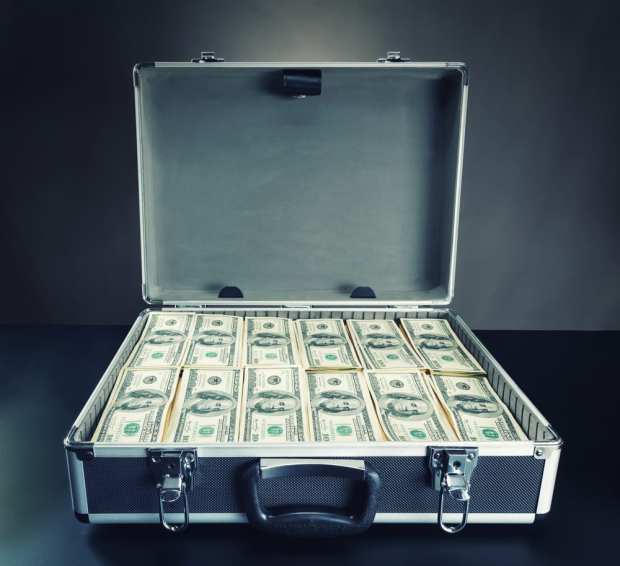How Prepaid Cards Played A Role In El Chapo’s Global Drug Operation

The story goes something like this: During the reign of drug kingpin Pablo Escobar — estimated to have supplied up to 80 percent of the cocaine to the U.S. at the height of his business — his cartel was taking in so much cash that the organization’s accountants made allowances for the 10 percent that would rot via water damage or be consumed by rats.
That story, repeated in at least two books about Escobar, may or may not be exaggerated. But it covers the main challenge faced in the illegal drug trade: getting product into a specific location and getting their earnings out in a way that does not trigger anti-money laundering defenses.
Now, the recently concluded trial of Joaquín Guzmán Loera — the Mexican drug lord known as “El Chapo,” a man very likely to spend the rest of his life in a U.S. federal prison — shows how the money laundering game now stands for those global suppliers of cocaine, heroin and other illegal drugs. Prepaid debit cards are playing an important role.
Too Much Cash
Accounts from the testimony of Guzmán — who ran the Sinaloa Cartel — show a business that found ingenious ways to run drugs across the U.S.-Mexico border (sophisticated tunnels, modified trains and rail spurs, even jalapeño cans designed to fool border inspectors), and whose main distribution points were Lost Angeles, Chicago and New York City. During the trial, prosecutors said Guzmán made some $14 billion in drug profits during a career that kicked off in 1990.
That’s a massive amount of money to handle.
That is especially true given that so much of the cash was in small bills, given the particular mechanics of the drug trade. According to an account of the trial in The Wall Street Journal, “The drug money often came back to Mexico in cars. In 1989, Mr. Guzmán’s brother, Arturo, was stopped as he was driving across the Arizona border carrying more than $1.2 million in cash.” As Guzmán prospered, he reportedly bought a “private jet (to) pick up the cash at the border and fly it back to Mexico City, where it would be wheeled in suitcases to be deposited at banks.” Each jet would carry $8 million or more.
But that wasn’t good enough for the cartel run by El Chapo.
Eventually, the organization had to rely on prepaid debit cards, specifically for moving money from “New York to Colombia and Ecuador to buy more cocaine.” Here’s how it worked, according to the Journal account: “The cartel used debit cards that could be loaded up with as much as $9,900 per card. Unlike cash, which is made of linen that can absorb drug residue and attract drug-sniffing dogs, debit cards can be easily cleaned. After the cards arrived in South America, the cartel hired workers to withdraw the money from ATMs.”
Favorite Methods
That fact, documented via testimony at Guzmán’s trial, points to changes in how international suppliers of illegal drugs move their earnings and make them clean in order to protect those gains from law enforcement.
According to the U.S. Federal Bureau of Investigation, the prepaid card method used by the Sinaloa cartel is among the most common ways that drug dealers and other criminals launder money these days. “Prepaid access cards are used by criminals in a variety of ways,” the agency said. “Criminals can direct federal or state tax authorities to issue fraudulent tax refunds on prepaid debit cards.”
Another longstanding method used by drug dealers is trade-based money laundering, or TBML. According to the FBI, “in complex TBML schemes, criminals move merchandise, falsify its value and misrepresent trade-related financial transactions, often with the assistance of complicit merchants, in an effort to simultaneously disguise the origin of illicit proceeds and integrate them into the market. Once criminals exchange illicit cash for trade goods, it is difficult for law enforcement to trace the source of the illicit funds.”
Cash Endurance
That said, cash still remains popular with drug traffickers. That activity accounts for “probably the most significant single source of illicit cash,” the FBI noted. “Mexican drug trafficking organizations responsible for much of the United States’ drug supply commonly rely on multiple money laundering methods, including bulk cash smuggling, to move narcotics proceeds across the U.S.-Mexico border into Mexico.”
Money laundering, of course, is a constant danger that financial institutions and other payments-related firms guard against. Sometimes, the danger is apparently not worth the return on investment, at least when it comes to some banks along the U.S.-Mexico border. A report last year from the U.S. Government Accountability Office described how some banks along the border are closing branches because of the challenges of complying with AML regulations.
“The Southwest border region is a high-risk area for money laundering activity, in part because of a high volume of cash and cross-border transactions, according to bank representatives and others,” the report said. “These types of transactions may create challenges for Southwest border banks in complying with Bank Secrecy Act/anti-money laundering (BSA/AML) requirements, because they can lead to more intensive account monitoring and investigation of suspicious activity.”
The federal agency found that in 2016, “bank branches in the Southwest border region filed 2-1/2 times as many reports identifying potential money laundering or other suspicious activity (Suspicious Activity Reports), on average, as bank branches in other high-risk counties outside the region.” What’s more, “an estimated 80 percent (+/- 11 percent margin of error) of Southwest border banks terminated accounts for BSA/AML risk reasons.”
Drug suppliers will keep moving their products across borders, and it seems almost certain that while cash will continue to have a dominate role — and some banks will continue struggling with money laundering detection — debit cards are set for more use among those illicit business operations.
